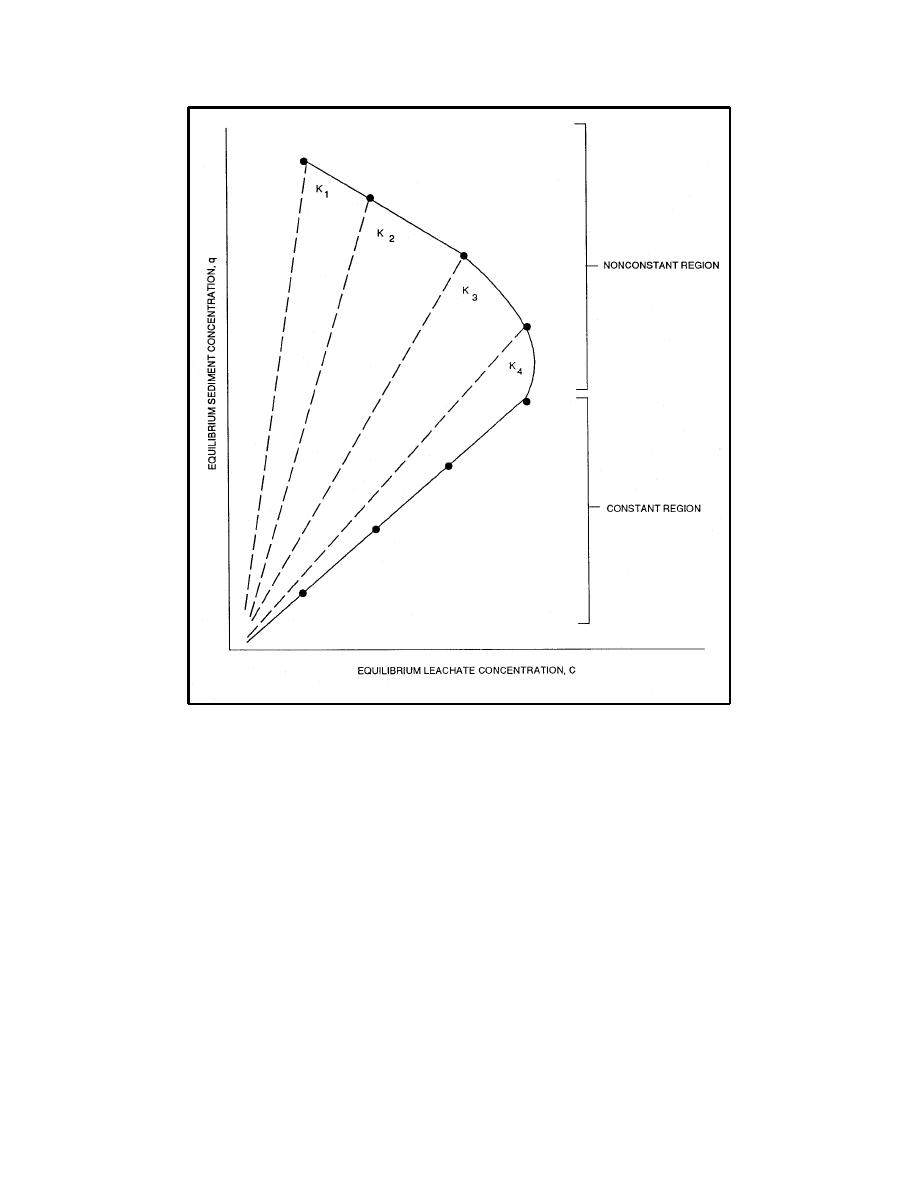 |
||
|
|
||
|
Page Title:
Figure D-5. Desorption isotherm illustrating nonconstant and constant partitioning |
||
| |||||||||||||||
|
|
 Figure D-5. Desorption isotherm illustrating nonconstant and constant
partitioning
organic carbon (DOC) concentrations in the aqueous phase, mobilizing metals
and organic contaminants bound to the colloidal matter (Brannon et al. 1991).
For these reasons, the type of desorption isotherm shown in Figure D-5 is
referred to as a DOC-facilitated desorption isotherm. Since the relationship of q
versus C is not a one-to-one correspondence for DOC-facilitated desorption
isotherms, q as a function of C cannot be developed from the isotherm.
The shear velocity at particle surfaces affects colloid release from sediment
particles under the influence of decreasing ionic strength. The shear velocities
developed by agitation during batch testing are infinitely large compared to the
low shear velocities developed as water percolates through dredged material in a
CDF. Colloidal mass release in a batch test, therefore, is not representative of
colloidal mass release in a CDF under the influence of decreasing ionic strength.
In addition, batch testing requires a liquid-solids separation step that alters the
size distribution of colloids that are included in the dissolved phase. Thus, in a
batch test, neither the mass nor the size distribution of colloidal release to pore
D7
Appendix D Leachate Testing Procedures
|
|
Privacy Statement - Press Release - Copyright Information. - Contact Us - Support Integrated Publishing |